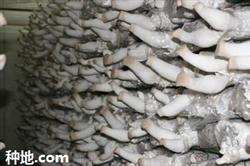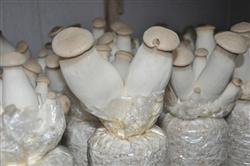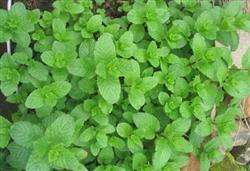How to cultivate Pleurotus eryngii

How to cultivate Pleurotus eryngii? Please guide Pleurotus eryngii, also known as Pleurotus ostreatus, Japanese snow antler, belong to basidiomycetes, Pleurotus ostreatus, Pleurotus ostreatus, Pleurotus ostreatus. Pleurotus eryngii is a kind of large fleshy bacteria with good quality in the mountains, grasslands and deserts of southern Europe, northern Africa and Central Asia. Pleurotus eryngii is very nutritious, the protein content of dried products is as high as 25%, contains 18 kinds of amino acids, and is rich in polysaccharides and oligosaccharides. Pleurotus eryngii has thick meat and crisp texture, especially the stalk is snow-white, thick and long, dense and strong, so it is one of the mushrooms with excellent taste. In 1998, China introduced cultivation and demonstration from Japan, and Pleurotus eryngii has changed from seasonal cultivation to factory cultivation in China. At present, China, Japan, South Korea, Thailand and Taiwan and other countries and regions have begun to enter commercial production. 2. The growth and development of Pleurotus eryngii and the common cultivated varieties of Pleurotus eryngii the conditions for the growth and development of Pleurotus eryngii are as follows: temperature range 22: 28 ℃ (mycelium), 15: 18 ℃ (fruiting body); moisture and humidity: the water content of culture material is 60%-63%, the air relative humidity during mycelial growth period is less than 70%, and the air relative humidity at fruiting body formation stage is 90%-95%. The pH value of culture: the most suitable pH value is 6.5-7.5. Light: the differentiation and growth of fruiting body need 500~1000Lx scattering light. There are many varieties of Pleurotus eryngii, such as Taiwan No. 6, Fujian No. 1, Henan No. 3, Beijing No. 4, Japan No. 5 and Shandong No. 8 and so on. Each region should choose the suitable cultivated varieties of Pleurotus eryngii according to the local natural climatic conditions. 3. Cultivation technology of Pleurotus eryngii the cultivation process of Pleurotus eryngii mainly includes the following five aspects. The main steps of cultivation are as follows: strain preparation, → bag culture, → mushroom production management, → mushroom emergence → stubble management. 1. The standard of strain acquisition and selection the selection standard of Pleurotus eryngii is: strong growth, uniform hyphae, adapting to local climatic conditions and strong productivity. 2. Selection, formulation and treatment of cottonseed hull, broad-leaved tree sawdust, bagasse, wheat straw and other agricultural by-products can be used to cultivate Pleurotus eryngii, among which the yield and shape of cottonseed shell is the highest. The most suitable pH value of culture material is 6.5 to 7.5, and the ratio of material to water is 1: 1.2, 1: 1. 3. The commonly used formulations are as follows: formula 1: cottonseed hull 65%, sawdust 18%, wheat bran 15%, calcium carbonate 2%. Formula 2: cottonseed hull 40%, sawdust 38%, wheat bran 20%, calcium carbonate 2%. Formula 3: cottonseed hull 37%, sawdust 37%, wheat bran 24%, sugar 1%, calcium carbonate 1%. Formula 4: soybean straw powder 30%, cottonseed shell 22%, sawdust 22%, wheat bran 19%, corn meal 5%, sugar 1%, calcium carbonate 1%. 3. Cultivation methods and mushroom production management the main cultivation methods of Pleurotus eryngii are as follows: plastic bag cultivation, soil-buried bed cultivation and semi-buried cultivation. The following take bag cultivation as an example to introduce the cultivation and management of Pleurotus eryngii: (1) the key points of bag culture: one is bag selection: low-pressure high-density polyethylene plastic bag with diameter 17~20cm and long 33~35cm; the second is sterilization operation: conventional sterilization, inoculation and mycelium culture; third, culture conditions: mycelium growth stage, temperature 20: 25 ℃, culture time about 50 days, shading culture. (2) mushroom production management in order to cultivate Pleurotus eryngii with good quality, it is necessary to control the temperature, humidity and ventilation conditions during the culture period. Temperature condition: 10: 15 ℃ (primordium formation stage) → 15: 18 ℃ (fruiting body growth stage), if the temperature is higher than 18 ℃, the fruiting body growth is accelerated, the quality decreases, and the air temperature is more than 22 ℃, there are few primordia. Humidity conditions: during cultivation, spray water to the space and the ground as far as possible to keep the air relative humidity at 90%-95%. Ventilation conditions: during cultivation, ventilation should be carried out frequently to keep the air in the mushroom fresh, which is conducive to the normal growth of the fruiting body. (3) the harvest time can be properly controlled according to its commercial requirements, from mushroom bud to harvest, generally about 15 days, when the mushroom cover is about to spread, the spores have not yet ejected, and the harvest is the most suitable. 4. After the first tide mushroom was harvested in the intermittent period, the water was stopped for 4 days for 5 days, and the ventilation was strengthened at the same time, and entered the normal management procedure after mycelium repair. After about 14 days, the second tide of mushrooms appeared. But the yield and quality of the second tide mushroom is worse than that of the first tide mushroom. In addition, after the first tide mushroom is harvested, the plastic bags can also be removed for soil mulching cultivation, which can significantly increase the yield of two tide mushrooms. Comprehensive control of diseases, insect pests and miscellaneous bacteria during the period of cultivation and growth, especially in the period of fruiting body growth, edible fungi are often attacked by diseases and insect pests and some miscellaneous fungi. The more serious diseases and insect pests in the production of Pleurotus eryngii are: (1) the common diseases of Pleurotus eryngii are yellow rot and Fusarium wilt. Symptoms of ★ yellow rot: yellow brown spots spread to the whole mushroom body, resulting in yellowing and decay. The disease is mainly caused by Pseudomonas aeruginosa. Cause: the disease often occurs when the temperature is high (more than 20 ℃), humidity is high and ventilation is poor, and it is mainly transmitted through water. Prevention and control measures: during the growth of Pleurotus eryngii, ventilation management should be strengthened to avoid high temperature and high humidity environment. After each water spray, combined with ventilation management, reduce the surface moisture of the mushroom body, and prevent bacterial diseases. After the occurrence of the disease, remove the diseased mushroom in time and strengthen the management of ventilation to prevent the infection of other mushrooms. Symptoms of ★ Fusarium wilt: the growth of young Pleurotus eryngii stopped, shrank and died, and finally yellowed and rotted. The cause of the disease: the death of young mushrooms was mainly caused by high temperature (more than 22 ℃), and finally bacterial infection, yellowing and decay occurred. Control measures: during the cultivation of Pleurotus eryngii, once there is a high temperature, cooling measures should be taken immediately. After the young mushroom withered and died, it should be removed in time to prevent bacterial reproduction, mushroom body decay, induce pests to feed and breed, and insect pests appear. (2) during the cultivation of Pleurotus eryngii, the common pests are mites, nematodes, mushroom mosquitoes and so on. Mites, commonly known as fungus lice, are tiny, gregarious, white and pink in color. They are the main pests of edible fungi. Mites move slowly and often lay eggs on culture materials or mushroom pleats. After the occurrence of bacterial mites on the mushroom bed, the mycelium of the bag was first bitten by insects, resulting in no mycelium germination after inoculation, biting off the hyphae, causing mushroom buds to atrophy and die, and mite attached to the fruiting body to bite up and down, resulting in discoloration of the bitten site and serious pores, resulting in decay and deterioration. Nematode is a kind of lower animal with many species and wide distribution. Most of the nematodes that harm edible fungi are saprophytic nematodes, a few are semi-parasitic, and only a few are parasitic pathogenic nematodes. Nematodes are both harmful mycelium and fruiting bodies. There are many kinds of mushroom mosquitoes, larvae often appear in wet places, like to eat culture materials and growing mushroom fruiting bodies. Mushroom mosquitoes do great harm to the cultivation of edible fungi, and will also cause other pathological changes of edible fungi due to the damage of mushroom mosquitoes. After the occurrence of insect pests, it seriously affects the yield and quality of Pleurotus eryngii, so it is necessary to strengthen prevention and control. First of all, the culture materials should be sterilized thoroughly to kill the eggs; secondly, the mushroom room should be regularly cleaned and disinfected to keep the environment clean and hygienic; thirdly, the mushroom room should be ventilated regularly to keep the air fresh. Click to get more cultivation techniques of Pleurotus eryngii
- Prev

How about mushroom?
In the cultivation process of Pleurotus eryngii, mushroom farmers did not take necessary bud thinning in time, resulting in many small mushroom buds growing on both sides of the bag after primordium differentiation, few or dozens. However, due to the limitation of nutrition and space, most of these mushroom buds cannot grow into commercial mushrooms and lose commercial value....
- Next

Efficient planting technique of peppermint
Peppermint alias Su mint, South peppermint, for the Labiatae plant peppermint, with the whole grass medicine, with the evacuation of wind and heat, clear leader, regulating qi and relieving depression and other effects. Peppermint has strong adaptability and is planted in the area of 300m-1000 m above sea level, and its oil and menthol content is high. Like warm and humid environment, the optimum temperature for growth is 20 ℃.
Related
- Fuxing push coffee new agricultural production and marketing class: lack of small-scale processing plants
- Jujube rice field leisure farm deep ploughing Yilan for five years to create a space for organic food and play
- Nongyu Farm-A trial of organic papaya for brave women with advanced technology
- Four points for attention in the prevention and control of diseases and insect pests of edible fungi
- How to add nutrient solution to Edible Fungi
- Is there any good way to control edible fungus mites?
- Open Inoculation Technology of Edible Fungi
- Is there any clever way to use fertilizer for edible fungus in winter?
- What agents are used to kill the pathogens of edible fungi in the mushroom shed?
- Rapid drying of Edible Fungi

